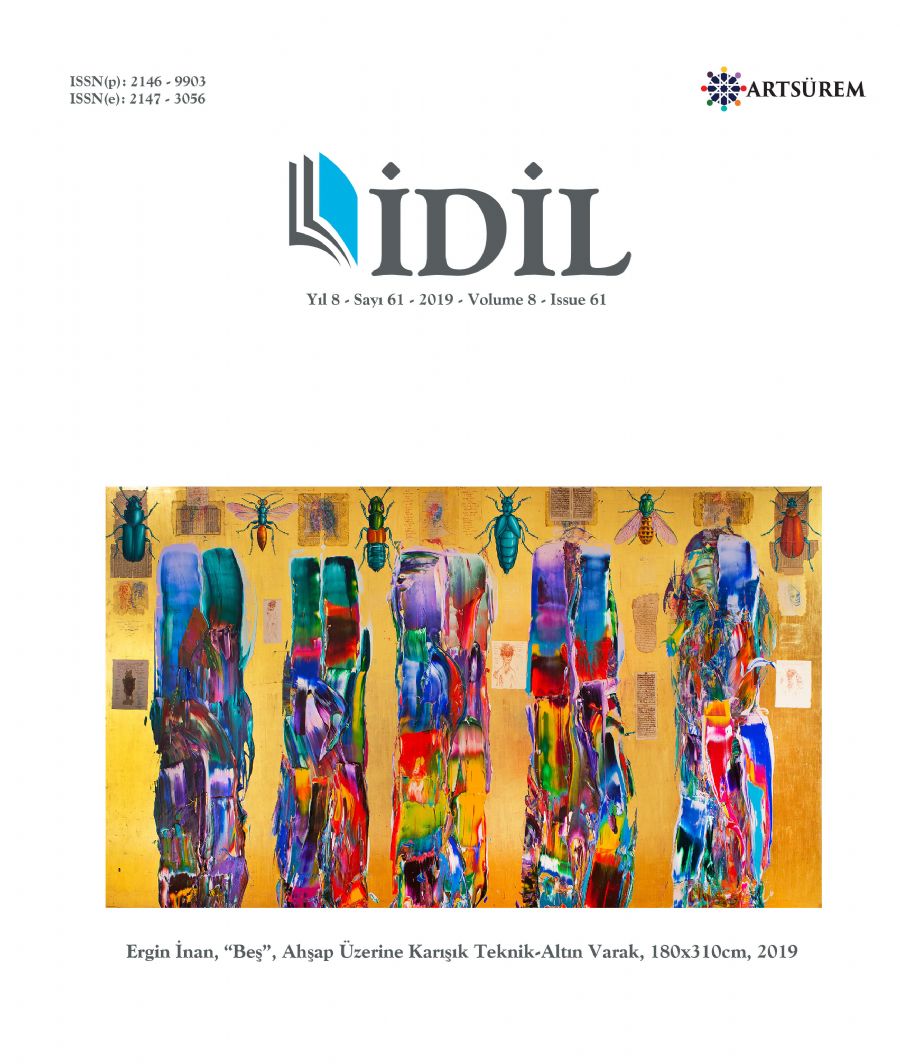PEŞKİR VE MAHRAMA DOKUMALARININ SİNOP EL DOKUMACILIĞINDAKİ YERİ
THE POSITION OF PESKIR AND MAHRAMA WEAVINGS IN SINOP HAND WEAVING
Author(s): Dilek Tüm CebecġSubject(s): Fine Arts / Performing Arts, Visual Arts, Cultural Anthropology / Ethnology
Published by: Sanat ve Dil Araştırmaları Enstitüsü
Keywords: Sinop; Weaving art; Ayancık linen; peskir; Duragan mahrama;
Summary/Abstract: Weaving art is seen as one of the oldest branch of art that mankind has introduced during historical periods. Weaving art has played an important role on the formation of the culture in the regions where people has lived and dominated. From prehistorical periods, people have made use of various kinds of animal and plant sources as material of weaving. Plant fibers such as linen, hemp and cotton have been natural textile materials used in weaving. Such types of plant fibers are mostly used in hand weaving as well. Hand Weaving is an ancestor art that has continued for many centuries in various regions of Anatolia. One of the regions where hand weaving has settled starting from ancient times is the Province of Sinop and its surroundings. One of the two different regions where hand weaving has grown is the Districtof Ayancık and the other one being the District of Durağan. Especially in the District of Ayancık, textile products that reflects the culture of region, are produced in regional bench with use of linen fibers. That this region be convenient for linen planting is the leading factor for use of such fibers. Peskir (regional towel) is one of textile products produced from linen fiber. On the other hand, in the District of Durağan, mahrama (again a regional towel) made from cotton fiber is another traditional product of hand weaving in the region. In this work, properties of hand weaving art that has continued in the Districts of Ayancık and Durağan dating from old times, are investigated. Especially by making field research in related regions, materials and techniques used in weaving art as well as pattern features are presented. In the related research, it has been determined that regional peşkir weaving resembles mahrama. It has been detected that peşkir, that was produced for the use of hand and face towel in old times, has been woven by similar technique as for mahrama but peşkir has been woven thinner and longer compared to mahrama (mahrama has been woven denser) . In addition, it has been observed that traditional geometric patterns with colored yarns has been used along shorter edges.It has been further presented that while linen is involved in the main fabric of peşkir weaving while the cotton is used in main fabric of mahrama weaving.
Journal: İdil Sanat ve Dil Dergisi
- Issue Year: 8/2019
- Issue No: 61
- Page Range: 1187-1198
- Page Count: 12
- Language: Turkish

